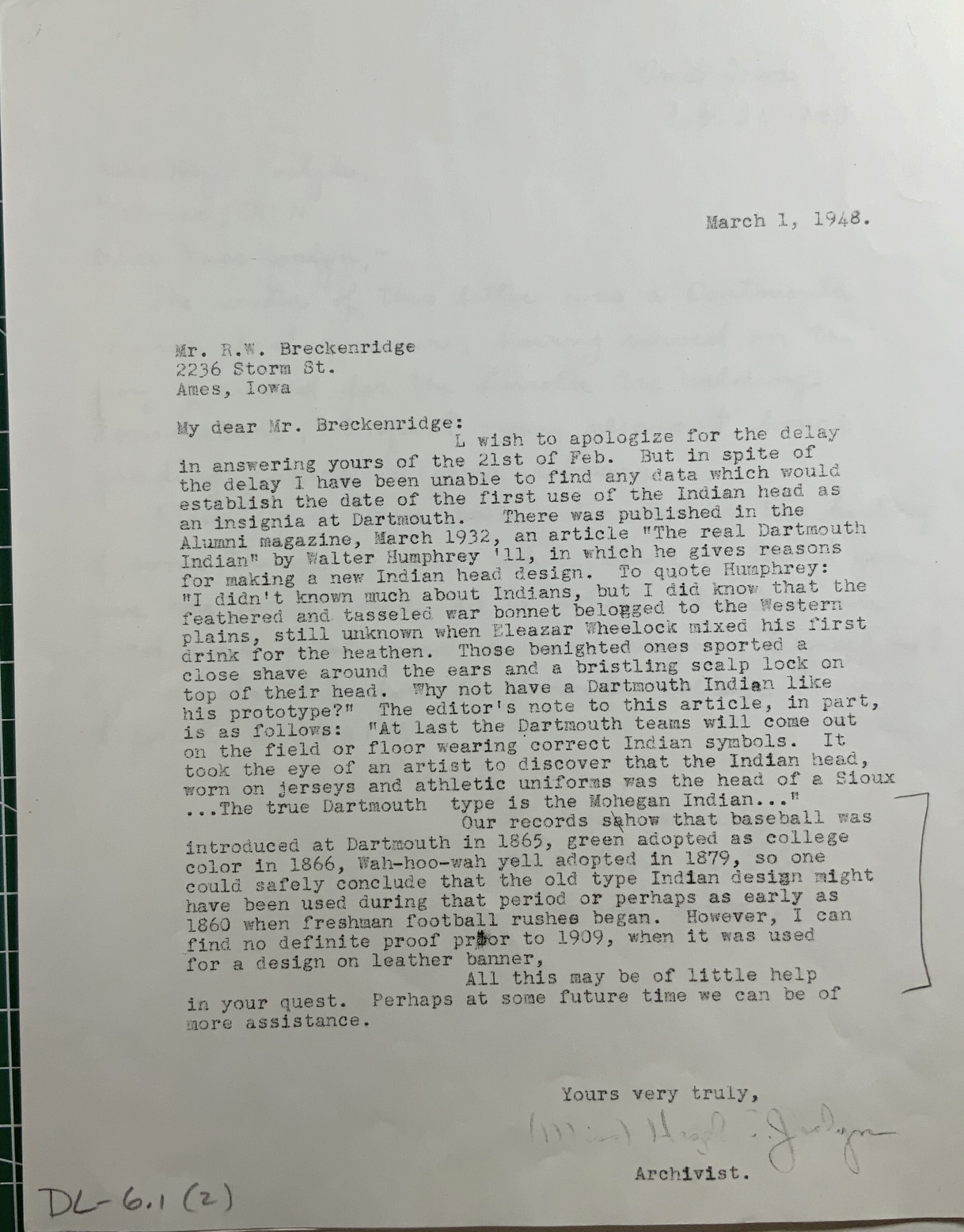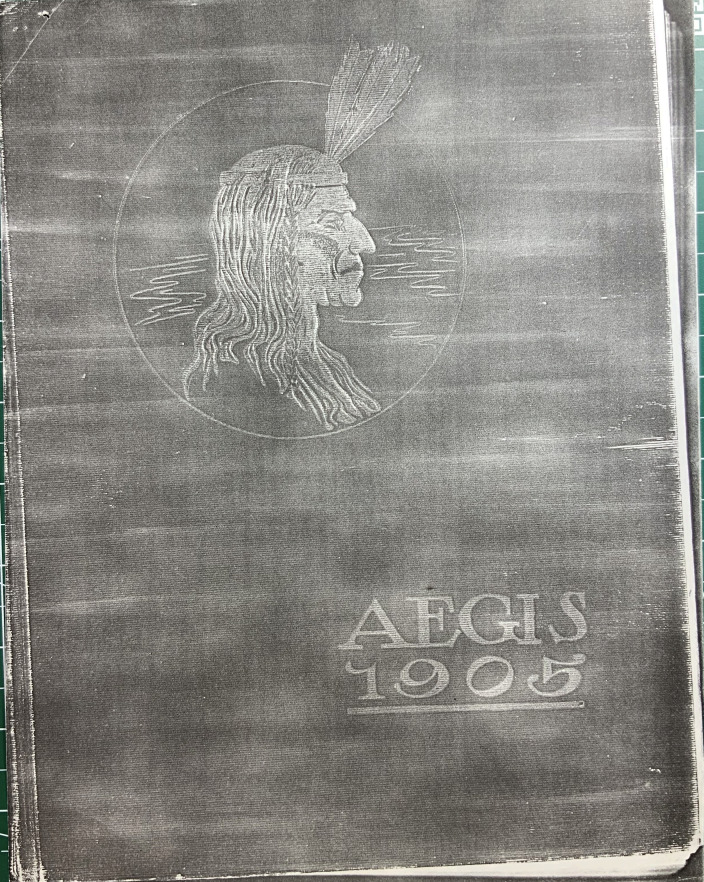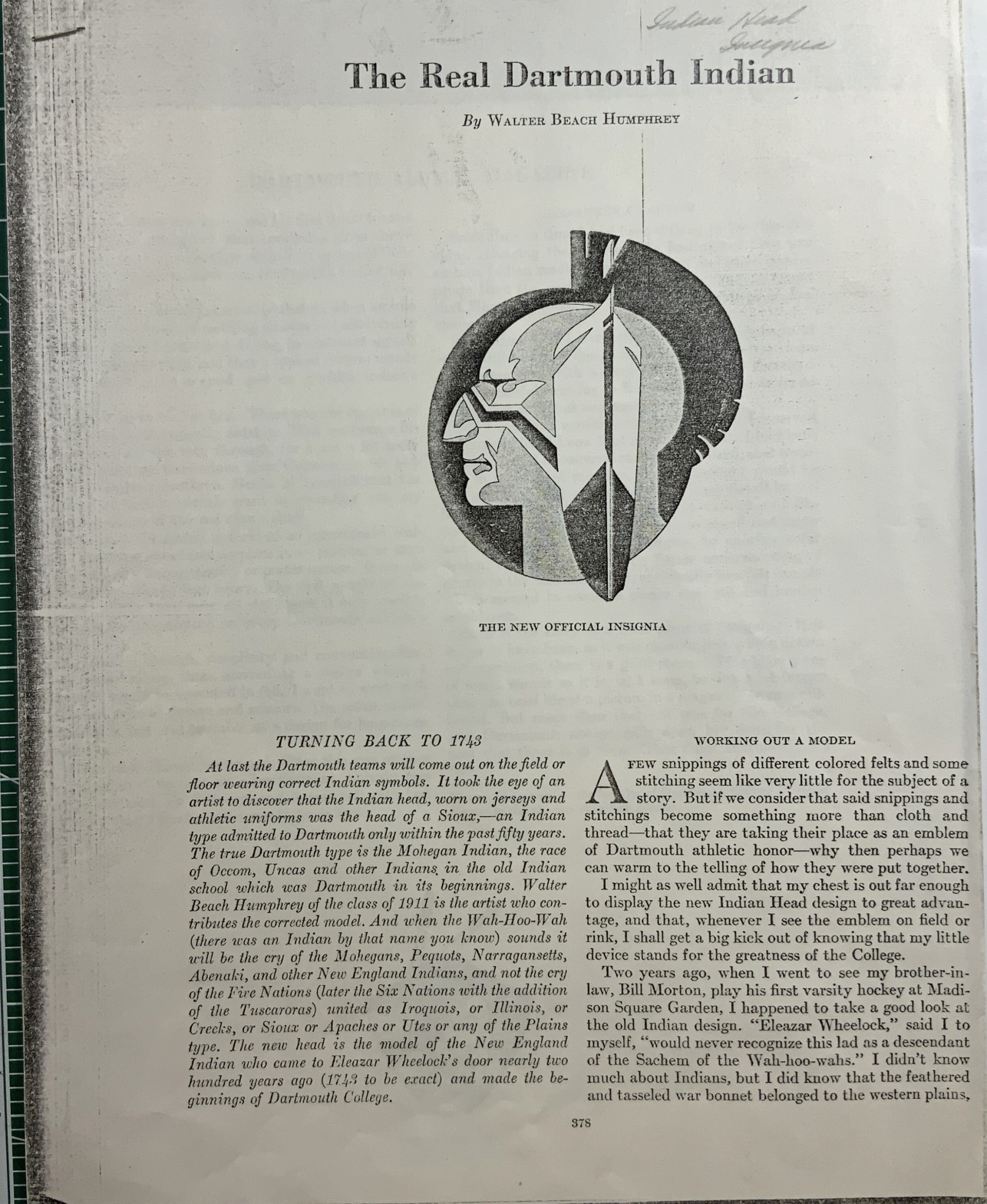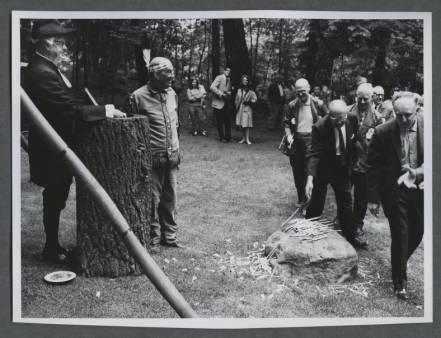The Beginning of the Mascot
Native American history at Dartmouth College dates back to the founding of the College itself. Dartmouth College was established in 1769 by Eleazar Wheelock as an institution to educate Native Americans. However, in the first 200 years of the College’s existence, only 19 Native American students graduated from the institution. The absence of native American representation in the student body did not prevent the College from adopting the “Indian” as their symbol and mascot.
Although its exact origins are unknown, the Indian symbol and “Wah-Hoo-Wah” chant at sporting events emerged near the end of the nineteenth century. In the following decades, the symbol was increasingly embraced by students and the College itself. The “Indian” became Dartmouth’s official mascot and its symbol gained popularity across campus as it began appearing on athletic uniforms, senior canes, College stationary, the library weathervane, and featured in many ad campaigns. In the 1930’s, the authenticity of the symbol was called into question by a former student because it did not depict an accurate image of the Native Americans from the region, but rather a stereotypical image of a Plains Indian adorned with a feather headdress. Although concerns for accuracy became prevalent in the 1930’s, there were no calls for the symbol or mascot’s removal during this time. The continued use of stereotypical imagery and red-face generally went unchecked. It is critical to note that during these decades of the symbol’s prominent use, the student body and administration were almost entirely made up of white men, and hence, the Native American voice on the use of the symbol was absent from the conversation.







